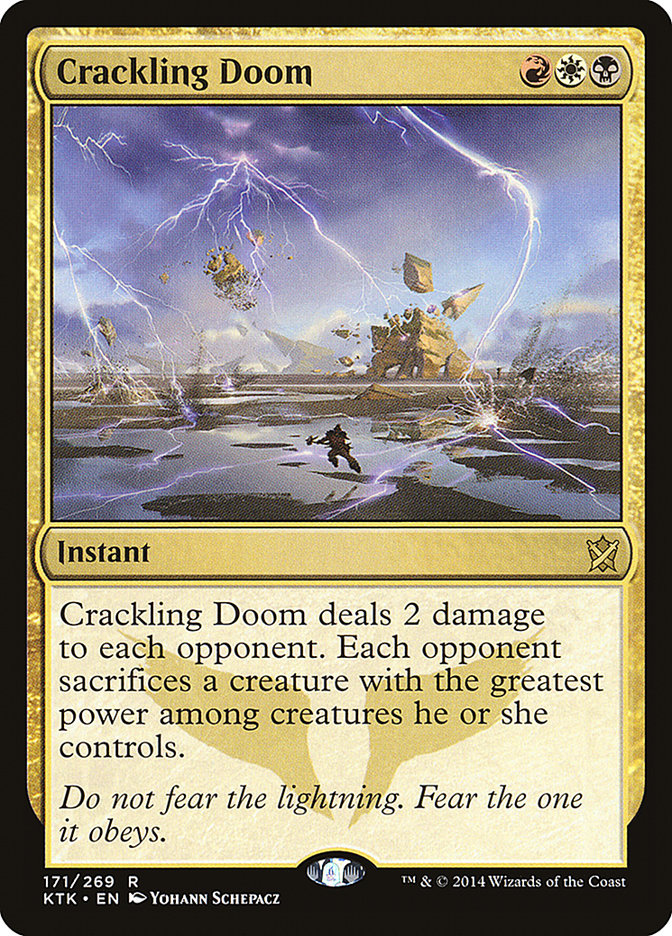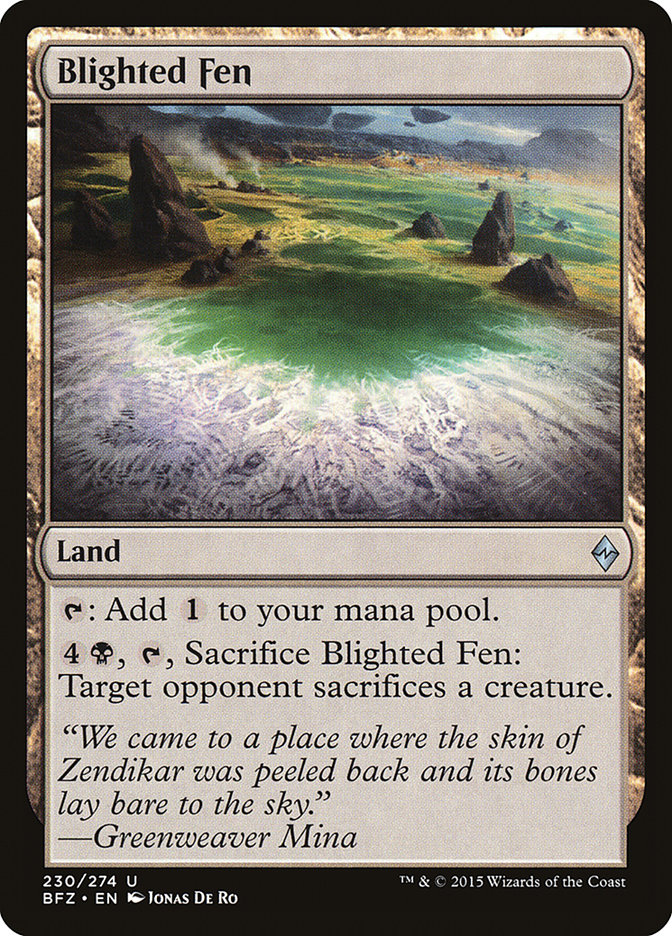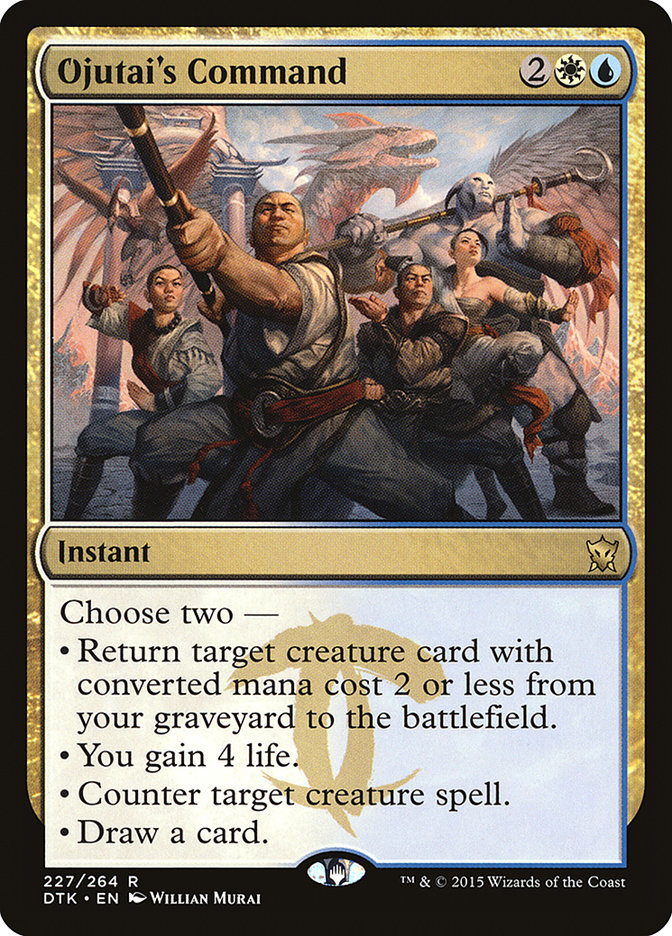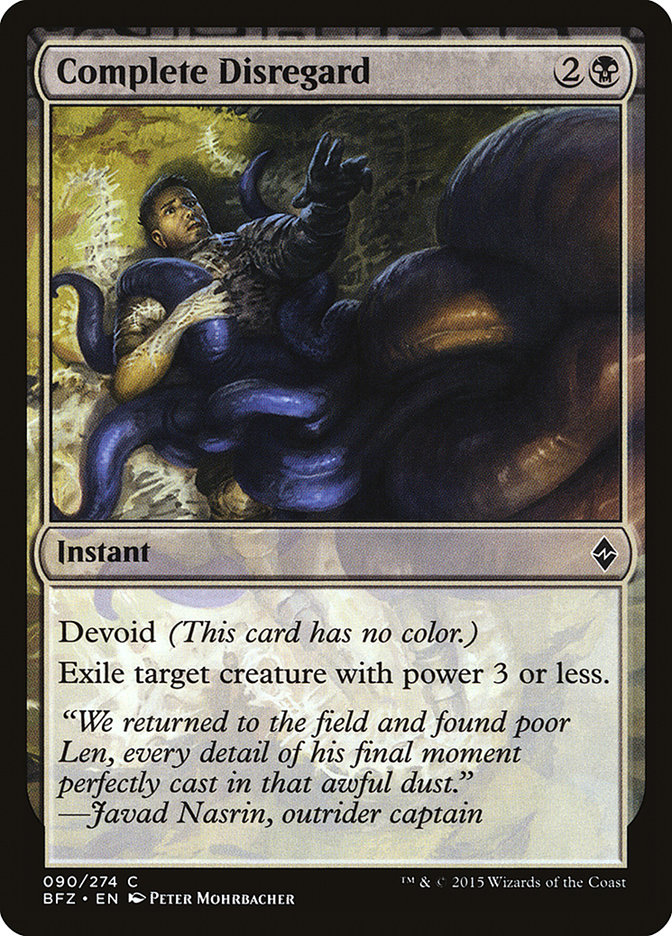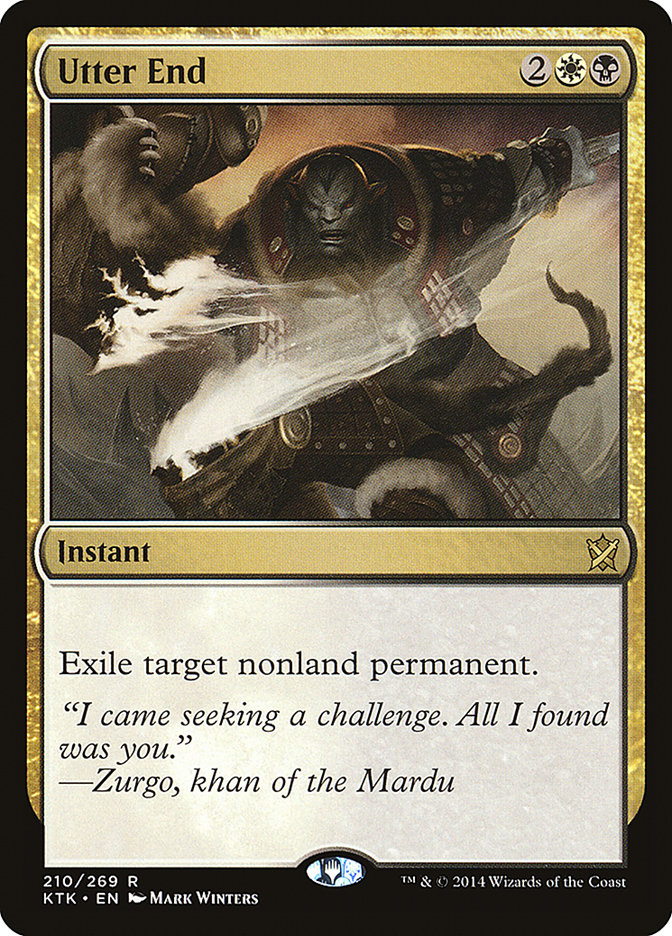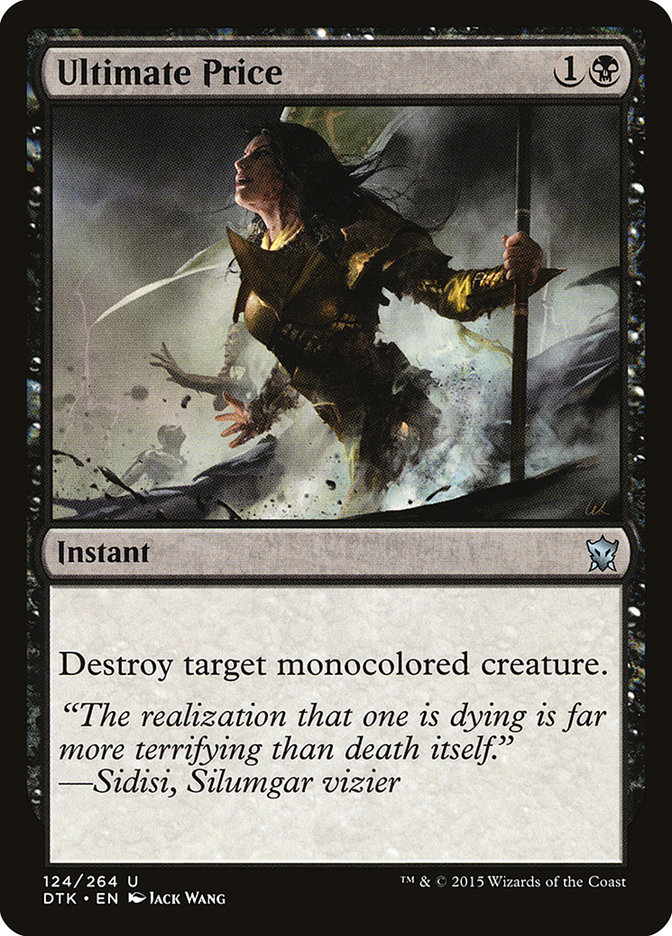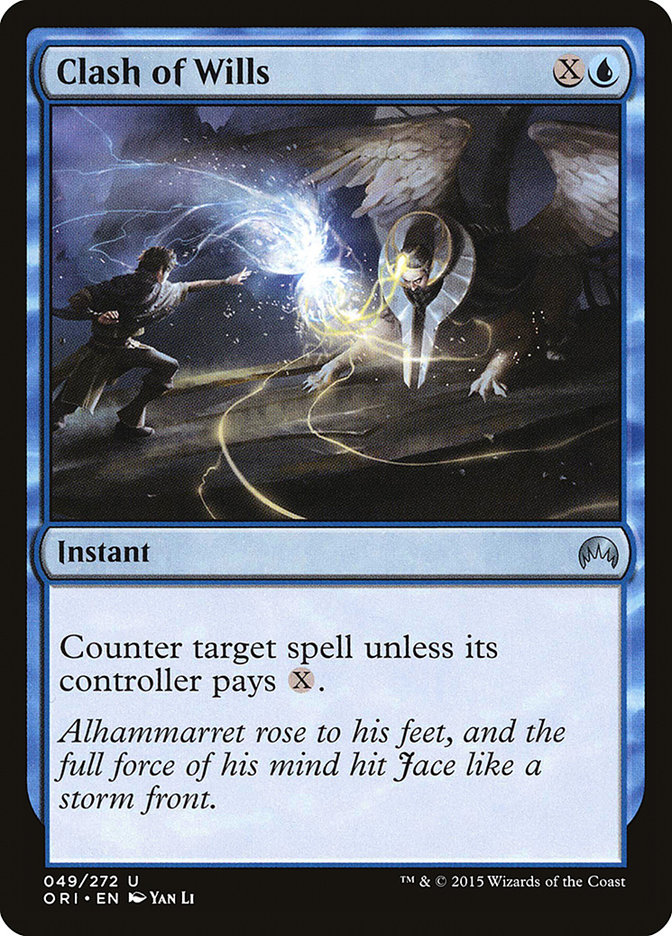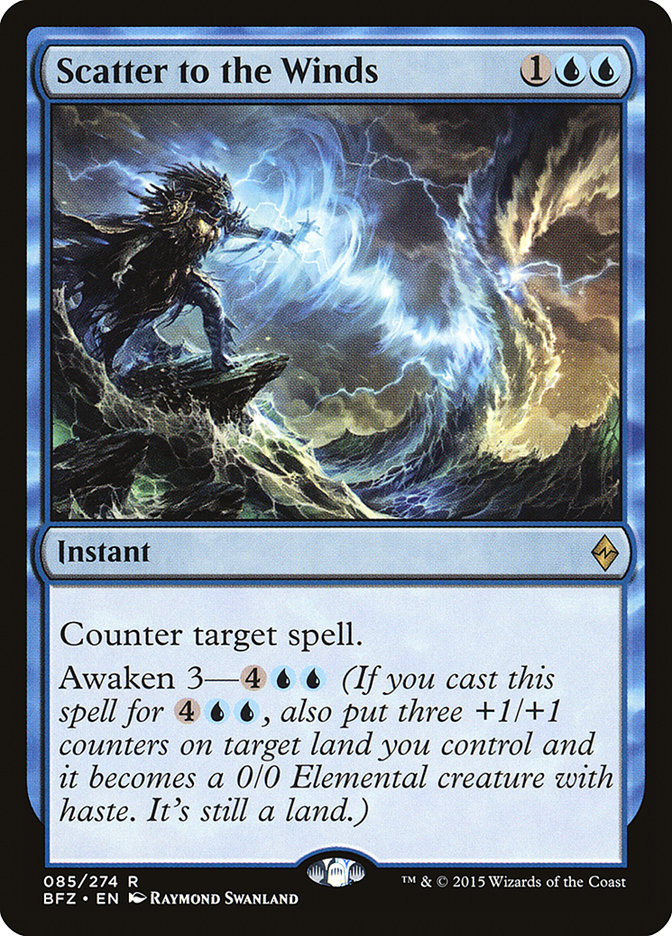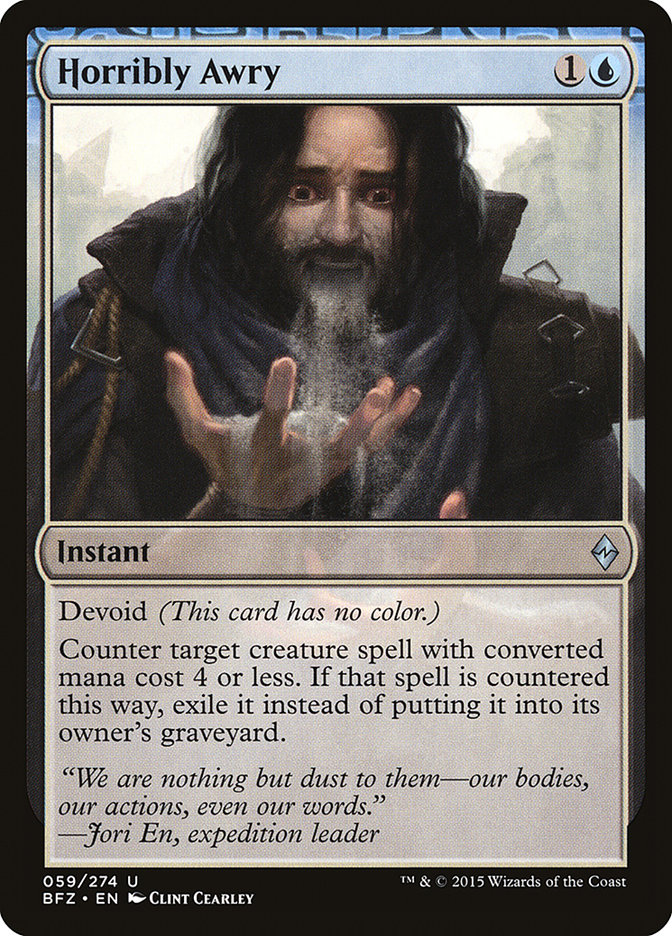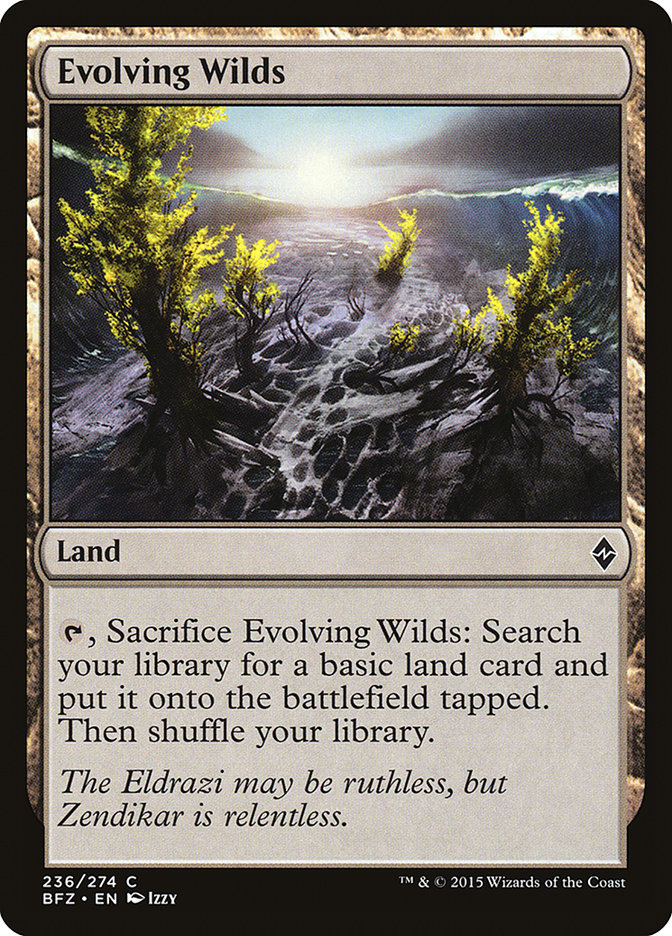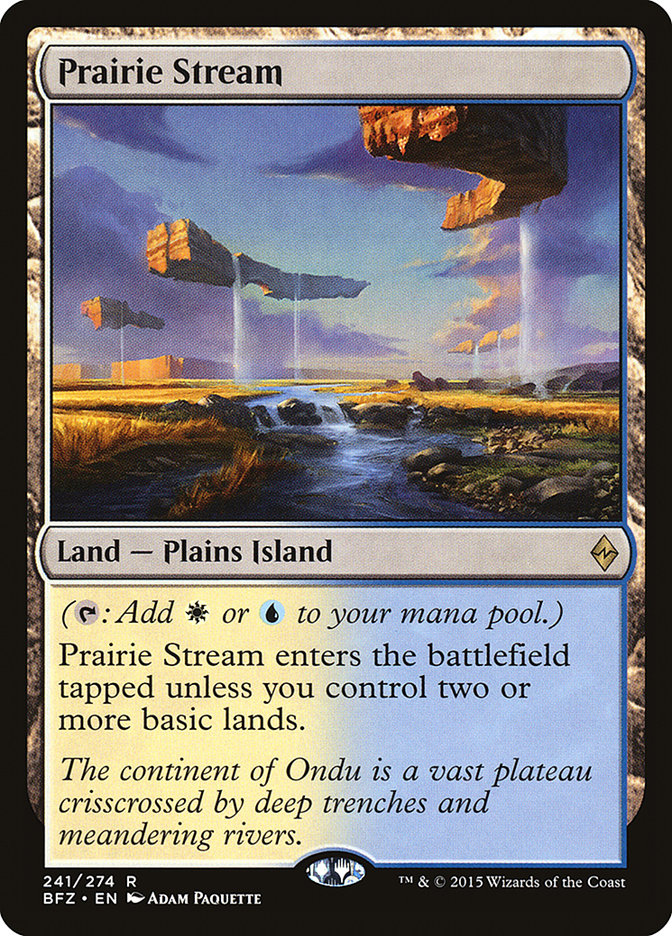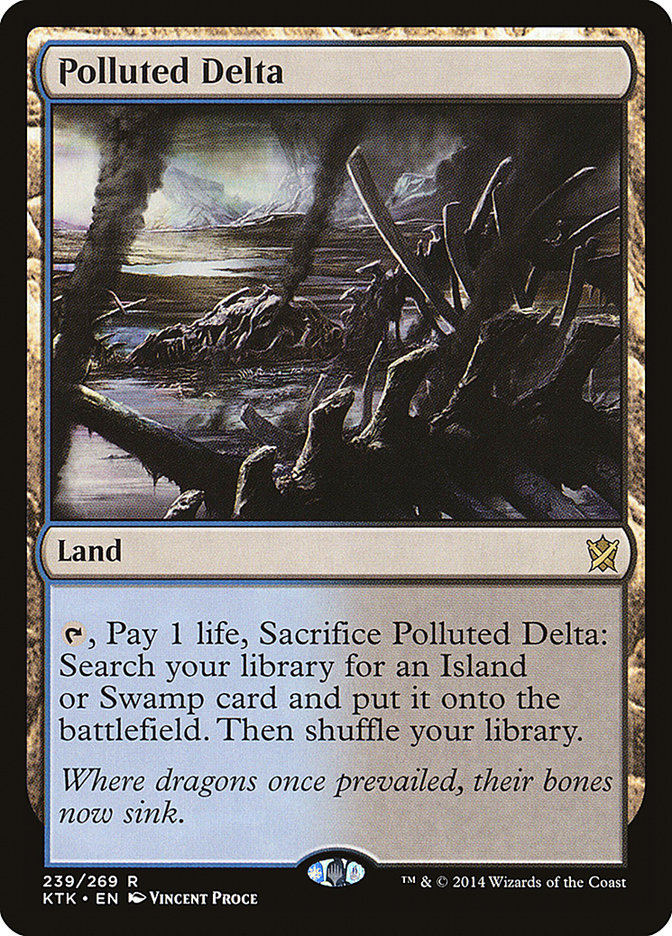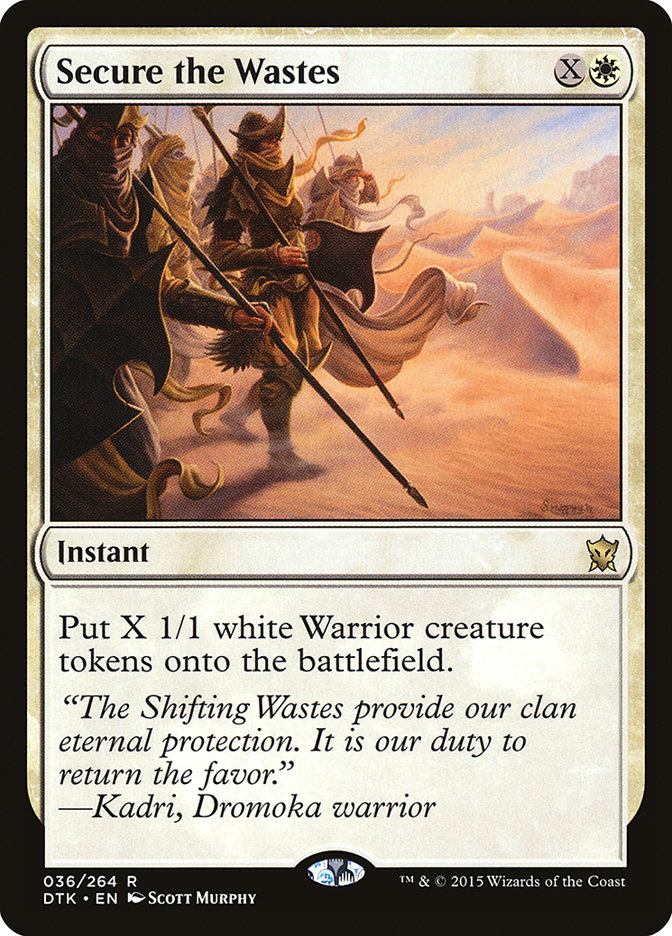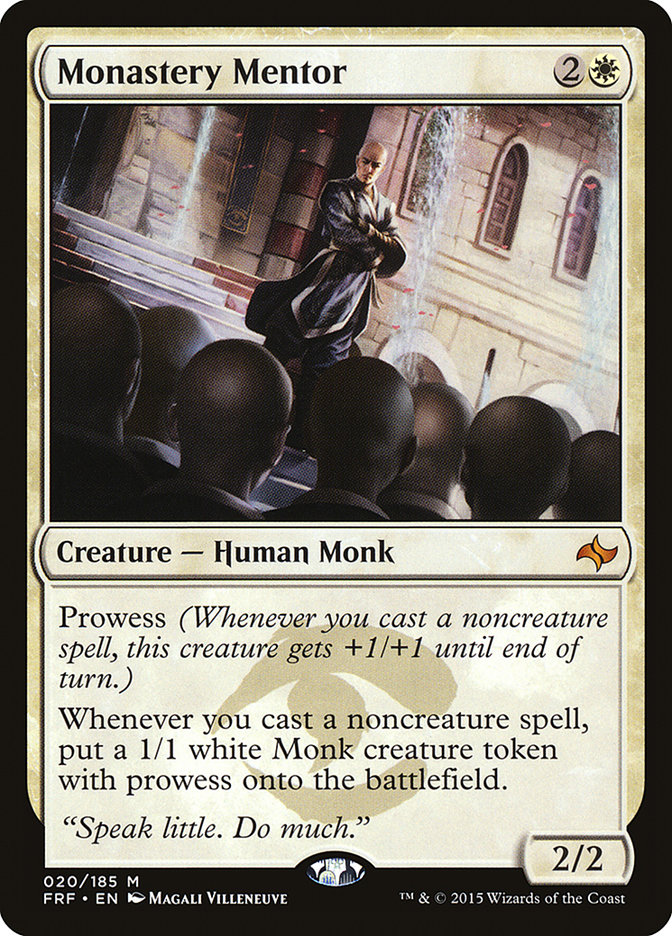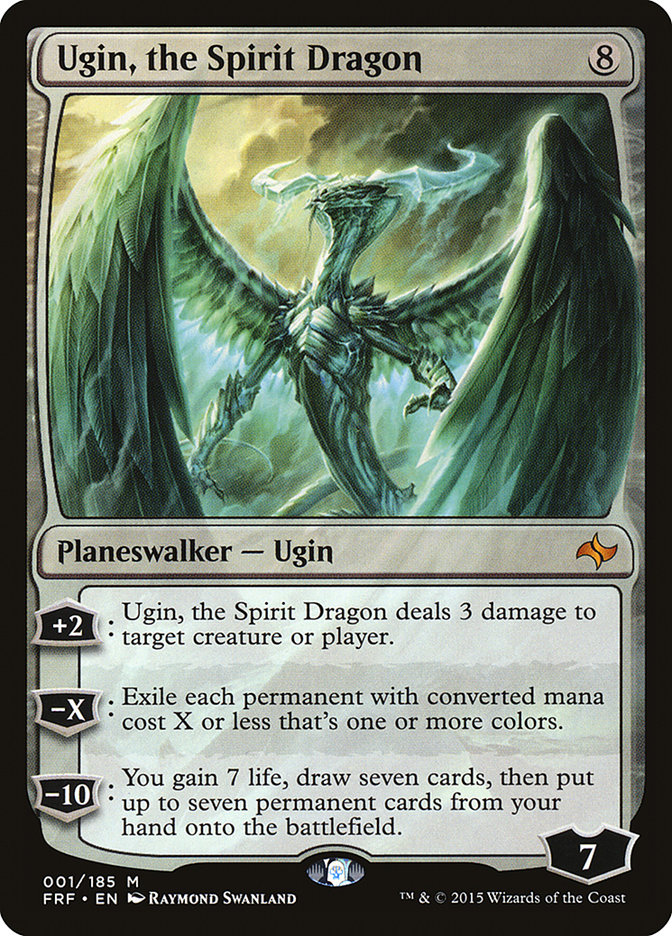I’m not a big fan of Esper Dragons.
Because of the need to turn on Silumgar’s Scorn and Foul-Tongue Invocation, you need to play between five and six Dragons in your deck, and while Dragonlord Ojutai and Silumgar, the Drifting Death are powerful Magic cards they are also rather one-dimensional. They are big, expensive, sorcery-speed threats that you want to cast pretty much as early as possible, and they don’t do anything else but be exactly that. This plays poorly with a more controlling game-plan, as it lowers the amount of options you are given each turn.
Control decks like to trade resources. They like to have their mana open, be able to respond to their opponents’ threats, and be able to dictate the pace of the game. While there are many control cards in Esper Dragons, the issue is that you play the control game for a few turns and then the last two cards in your hand are Dragons and you are basically forced into just casting them. This allows your opponent free reign on their turn, and also puts the impetus on you to be able to actually protect your Dragonlord Ojutai when it attacks the following turn.
In a way, this makes Esper Dragons feel a little bit more like an Abzan deck: disrupt the early game, play a huge and powerful threat, run away with the game.
A big issue is that both Esper Dragons and Abzan Control lost one of their best disruptive elements this rotation. Without Thoughtseize it is both difficult to disrupt your opponents’ early game and to clear the way for Dragonlord Ojutai in the mid-game. Of course, sometimes Thoughtseize is not necessary. You play a good control game, draw exactly one Dragonlord Ojutai, power up your Dragon spells, play Dragonlord Ojutai on turn seven with Silumgar’s Scorn backup, and run away with the game. The issue is when you draw two or three Dragons and are unable to sculpt a game-plan beyond just slamming them turn after turn and hoping for the best.
Beyond the issues inherent in the deck, the resurgence of Crackling Doom coupled with the uncounterable power of Blighted Fen makes tapping out for Dragonlord Ojutai a risky proposition. While the deck has six Dragons in it and promotes a somewhat sketchy “slam the Dragon” game-plan, these cards take that plan and turn it completely upside down. I watched a match last weekend where Andrew Jessup was piloting Esper Dragons against someone playing my B/W Control brew from a few articles back, and Andrew was actually incapable of winning Game One the way his deck was configured. His opponent had four copies of Blighted Fen in his deck along with his usual threats and removal and was readily able to actually answer every threat in Andrew’s deck.
That’s not a battle I want to fight, and I want to dictate when I cast my spells in my control deck; I don’t want my spells dictating when they should be cast for me.
So what’s a control player to do?
Give up and just start casting Mantis Rider?
Nah…
Creatures (4)
Lands (27)
Spells (29)

The deck is basically a combination of the U/W Control deck I played at #SCGMKE on the eve of the last format with some of the ideas from Will Erker’s deck I talked about in last week’s article. I really liked his approach of being light on win conditions and using Awaken as an extra source of incidental ways to win.
However, I was not willing to give up on my Jace, Vryn’s Prodigies and my Ojutai’s Commands.
That interaction, even with Jace being a bit underwhelming due to the nature of the deck, was paramount in my previous incarnation of U/W Control. Ojutai’s Command is already a powerful spell, as Standard is rife with creatures and Dismiss offers us excellent value. The big draw, however, is being able to present an end-of-turn threat with card advantage built in. Even if they Ultimate Price your Jace before you untap, you still got to counter a spell or draw a card off your Ojutai’s Command, and well-timed two-for-ones really add up in your favor.
However, we had another problem to solve. Will’s deck is extremely soft to a resolved planeswalker, and without Banishing Light around to clean up the mess there really aren’t many good options. I was also worried about never-ending Deathmist Raptors and Hangarback Walkers, as decks that play Deathmist Raptor often also play Dromoka’s Command which makes Stasis Snare a liability. Was black a better option than white?
Why choose between vanilla and chocolate when you can just have the swirl?
Complete Disregard has done nothing but overperform. It’s a great, instant-speed answer to most bothersome early creatures, and the exile clause is very important against Hangarback Walker and Deathmist Raptor. Not many cards in the format can handle both those cards, Jace, Vryn’s Prodigy, and Mantis Rider all at the same time. You even get the Last Breath-style synergy with Jace, Telepath Unbound – just give that Siege Rhino -2/-0 and send it away for good.
Following up is Utter End, which has also overperformed. While somewhat expensive, this is simply what we have now as our answer to planeswalkers without Hero’s Downfall around. And don’t get me started on Ruinous Path in control decks; a hard-to-cast sorcery-speed clunker is exactly what you don’t want in your instant-speed control deck. Utter End has a few jobs to do and does them well.
Lastly, adding black gives us access to the full range of black removal spells, ranging from Ultimate Price to Murderous Cut. These work great in a deck with Jace, Vryn’s Prodigy, as being able to flash back these removal spells is fantastic. They also go to the graveyard to help fuel Dig Through Time, which is a nice benefit too.
Our counterspell suite is rather robust, as the deck sports the full playset of Clash of Wills. Clash of Wills was not a major player in the previous format because of how manabases were constructed. With so many Temples and other enter-the-battlefield-tapped lands, it was simply too difficult to keep the proper mana open for Clash of Wills for what your opponent may play while also developing your own mana.
This has completely changed, as this deck has only a scant four lands in it that enter the battlefield tapped.
Because you can so reliably cast it up the curve, Clash of Wills is a fantastic answer to most of the format’s threats. Clash of Wills is the card that will bridge the gap for you to the midgame. Turn-two counterspells are so important that we even have a fifth in Horribly Awry.
Lastly, our Dissolve replacement also does a nice job as one of our win conditions as well. Scatter to the Winds is going to be a Cancel 95% of the time, and that’s just fine. I’ve cast many Cancels in my day, and it really isn’t that bad. The fact that it has extra utility is just gravy.
As mentioned before, the manabase is a thing of beauty. One of the things that the fetchland + Battle land package does very well is splash two allied colors into a mono-colored deck. This deck is essentially Mono-Blue Control splashing black for a few removal spells and white for Ojutai’s Command. While there is a double-white spell in the deck in Planar Outburst, it is not imperative to have it available on turn five, and even if you do need it then double white is not hard to swing at all.
The deck ideally opens on Evolving Wilds for a basic land, an Island, and then you can fetch Battle lands to your heart’s desire for the rest of the game. The mana is smooth and silky, and it even provides room for a little value with Blighted Fen. Having smooth mana is absolutely essential for such an instant-speed control deck, and this manabase lets you go right up the curve.
Yes Jim, the deck looks nice… but… uh… how do we win?
In typical classic-control fashion, you don’t really need to win, you just need to not lose.
I’ve never been a fan of dedicated control finishers like Aetherling or Dragonlord Ojutai because of how bad they are while you are setting up. As I’ve said many times, Elspeth, Sun’s Champion was an amazing finisher because it was actually just an amazing control card that also eventually killed your opponent as well. Well, we don’t have Elspeth anymore, so we are just going to need to make due.
The goal with Secure the Wastes is to treat it just like an Elspeth. Many times you are just going to make four or five tokens in the midgame and use them just like you would Elspeth tokens – a few blocks here, a trade there, maybe a chump block. The goal is for the card to be a good control tool; the fact that it can win you the game later is just gravy.
Thankfully Jace, Vryn’s Prodigy is totally happy to bring that Secure the Wastes back around for another go later in the game, and usually it will be for about ten and end the game in short order. The interaction between Jace and Secure the Wastes is not to be underestimated, as being able to use Jace to cast a legitimate win condition is superb.
The deck has other ways to win, be they Awakened lands or a Jace emblem, but most often flashing back a Secure the Wastes is going to secure the W.
The sideboard contains many of the usual suspects, but has a few tricks up its sleeve as well.
Monastery Mentor has been a great sideboard juke, as decks like G/W Megamorph aren’t really going to have any ways to kill it after sideboard. Mentor gets out of hand very quickly and can also buy you a lot of time by making blockers. Against slower decks, Mentor provides you with a very cheap threat that plays great with both Duress and Dispel and is easy to slip under countermagic.
Ugin, the Spirit Dragon comes in when you just need to go big. Some decks are going to try and out-late-game you, and sometimes they are going to have the tools to literally run you out of answers. Ugin, the Spirit Dragon is here for those matchups to be the be-all, end-all answer. There are many decks that just fold to Ugin, and having just one in your 75 can make all the difference.
I’ve played the deck in two IQs so far and I have been very happy with it. The format is certainly very young, but most matchups seem pretty favorable. The scariest decks are ones that can get under our counterspells, but we have such good sideboard options against aggressive red decks that it seems difficult to lose sideboarded games.
I’m excited to see where the format ends up this weekend at Pro Tour Battle for Zendkiar, and if control is going to be a player.
Bonus Round – Battle For Zendikar Fantasy Contest!
As if Pro Tour Battle for Zendikar and seeing what becomes of Standard isn’t exciting enough, it’s about to get a bit more intriguing – I’m running a free Battle for Zendikar Fantasy contest!
It’s pretty simple, you just pick cards you think are going to appear most often in the Battle for Zendikar Top Eight maindecks, and make your team. The only catch is that whatever the most popular card is for each category, that card will actually be worth zero points.
Full information is available on my Twitter page, and the only requirement for entry is that you follow me on Twitter @JimDavisMTG.
Let's play a game – #PTBfZ fantasy draft! Select cards you think will top 8 to build your team. Free entry, prize! http://t.co/NbOpSax3tz
— Jim Davis (@JimDavisMTG) October 14, 2015
There is a prize as well, and along with that you could see your face right here in my article next week if you are crowned champion! Hey, if you can’t win the Pro Tour you might as well win something, right?



